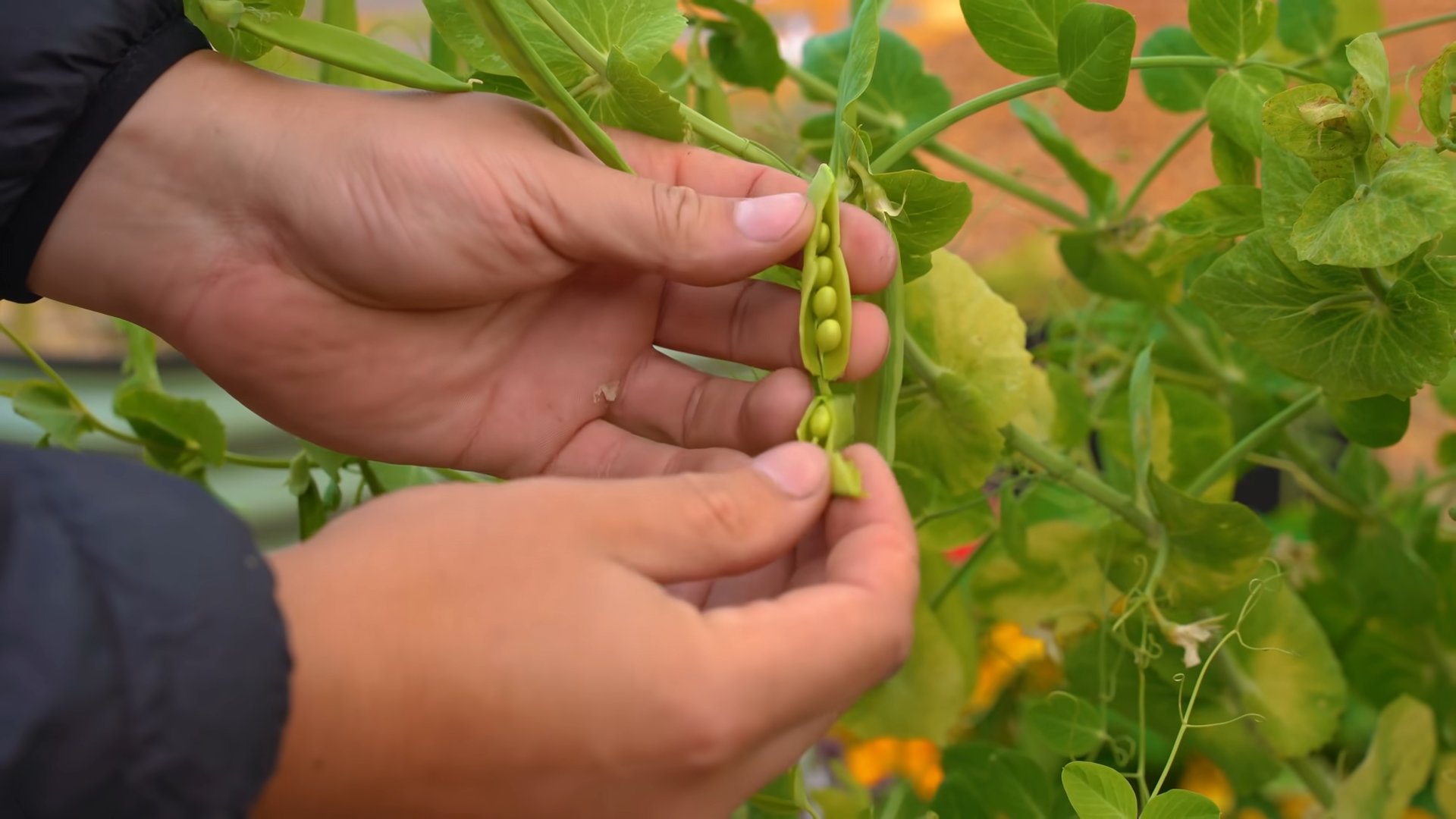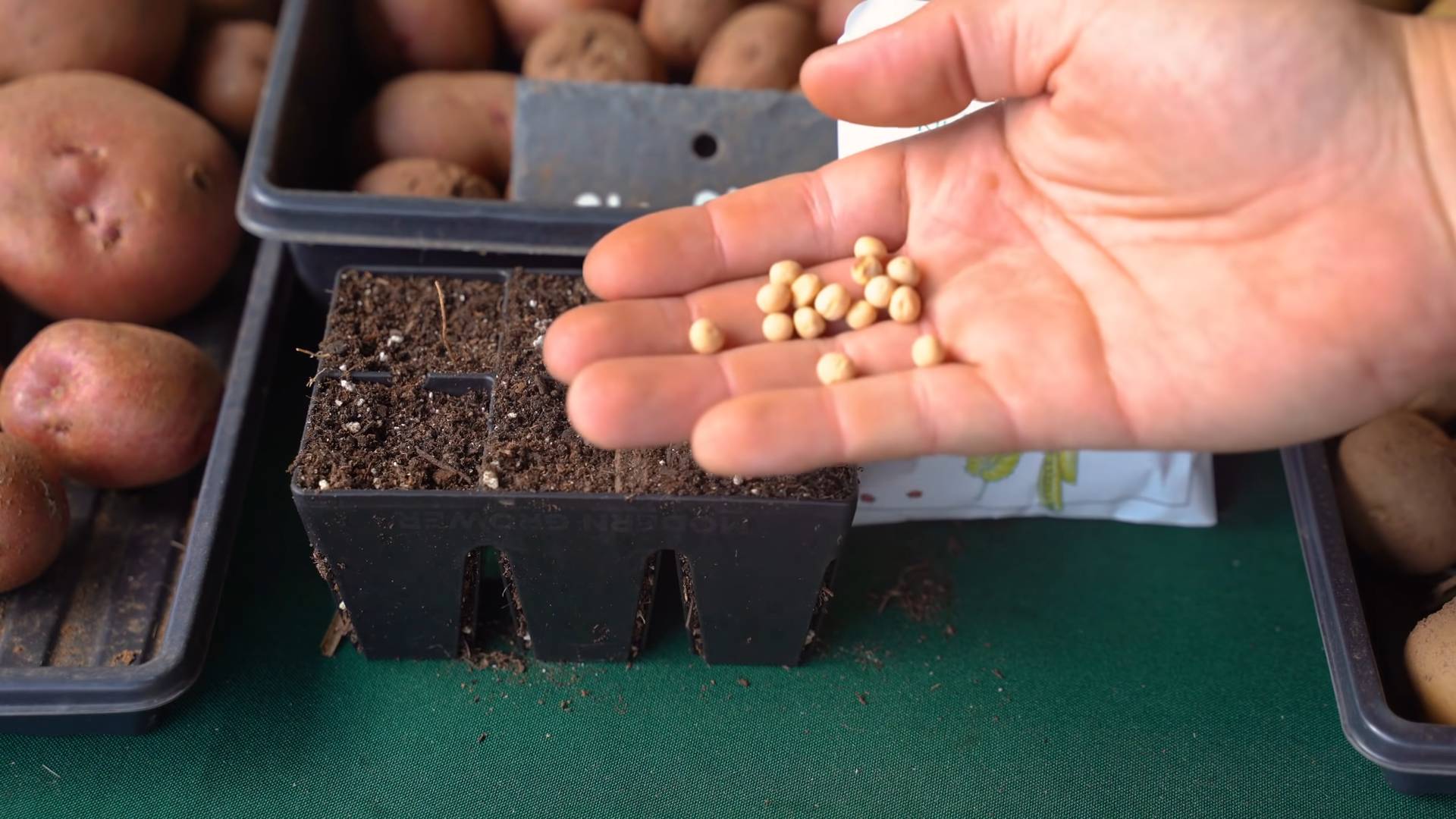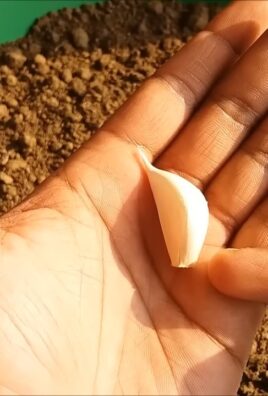Growing peas indoors might sound like a whimsical dream, conjuring images of sprawling vines in a sun-drenched field. But guess what? It’s totally achievable, even if you don’t have a sprawling garden! For centuries, humans have cultivated peas, tracing their origins back to the Near East. These little legumes were a staple food, providing essential nutrients and a delightful sweetness. Now, you can bring that history and flavor right into your home.
Are you tired of relying solely on grocery store produce, especially when you crave the fresh, vibrant taste of homegrown vegetables? Do you live in an apartment with limited outdoor space, or perhaps the weather in your area makes outdoor gardening a challenge? That’s where the magic of indoor gardening comes in! Growing peas indoors offers a fantastic solution, allowing you to enjoy a continuous supply of delicious, crunchy peas, regardless of the season or your living situation.
This DIY guide is your passport to a thriving indoor pea patch. I’ll share simple, effective tricks and hacks that will transform your windowsill into a mini-farm. Get ready to experience the joy of harvesting your own peas, adding a touch of green to your home, and savoring the unmatched flavor of homegrown goodness. Let’s get started!

Growing Peas Indoors: A Step-by-Step Guide to Fresh, Homegrown Goodness!
Okay, so you want to grow peas indoors? Awesome! I’m so excited to share this with you. It’s totally doable, and there’s nothing quite like the taste of fresh, homegrown peas, even when the weather outside is frightful. Let’s get started!
Choosing Your Pea Variety
First things first, not all pea varieties are created equal when it comes to indoor growing. We need to pick the right ones to maximize our chances of success.
* Bush Varieties: These are your best bet. They stay compact and don’t need a ton of support. Look for varieties like ‘Little Marvel,’ ‘Tom Thumb,’ or ‘Sugar Ann.’
* Dwarf Varieties: Similar to bush varieties, dwarf peas are bred to stay small, making them perfect for containers.
* Avoid Vining Varieties: These guys can get HUGE and require a lot of vertical space and support, which isn’t ideal for indoor growing. Think ‘Sugar Snap’ or ‘Oregon Sugar Pod.’ While technically possible, they’re much more challenging.
Gathering Your Supplies
Alright, now that we’ve got our pea variety sorted, let’s gather everything we need. Trust me, having everything on hand before you start makes the whole process so much smoother.
* Pea Seeds: Obviously! Make sure they’re fresh and from a reputable source.
* Containers: Choose containers that are at least 6 inches deep and wide. Good drainage is crucial, so make sure they have drainage holes. I like using plastic pots or even repurposed containers like yogurt tubs (just make sure to clean them well and poke some holes in the bottom!).
* Potting Mix: Use a high-quality potting mix that’s well-draining. Avoid using garden soil, as it can compact and not drain well in containers.
* Grow Lights (Optional but Recommended): While peas can grow indoors with natural light, they’ll do much better with supplemental grow lights, especially during the shorter days of winter.
* Watering Can or Spray Bottle: For gentle watering.
* Small Trellis or Support (Optional): Even bush varieties can benefit from a little support, especially as they start to produce pods. Bamboo stakes or small tomato cages work well.
* Seed Starting Tray (Optional): You can start your seeds directly in the containers, but a seed starting tray can give you a head start.
Planting Your Pea Seeds
Okay, time to get our hands dirty! This is the fun part.
1. Soak the Seeds (Optional): Soaking your pea seeds in water for 24 hours before planting can help speed up germination. I usually do this, but it’s not strictly necessary.
2. Fill the Containers: Fill your containers with potting mix, leaving about an inch of space at the top.
3. Sow the Seeds: Sow the pea seeds about 1 inch deep and 1-2 inches apart. You can plant multiple seeds in each container, but don’t overcrowd them.
4. Cover the Seeds: Gently cover the seeds with potting mix.
5. Water Thoroughly: Water the soil thoroughly until it’s evenly moist. Don’t overwater, though! You want the soil to be damp, not soggy.
Germination and Early Growth
Now comes the waiting game. But don’t worry, it won’t be long before you see those little sprouts popping up!
1. Maintain Moisture: Keep the soil consistently moist, but not waterlogged. Check the soil moisture daily and water as needed.
2. Provide Light: Place the containers in a location that receives at least 6 hours of direct sunlight per day. If you’re using grow lights, position them a few inches above the seedlings and keep them on for 12-16 hours per day.
3. Monitor Germination: Pea seeds typically germinate within 7-14 days. Be patient!
4. Thin Seedlings (If Necessary): If you planted multiple seeds in each container and they all germinate, you may need to thin them out. Choose the strongest seedlings and gently remove the weaker ones.
Caring for Your Pea Plants
Once your pea plants have sprouted, it’s important to provide them with the right care to ensure they thrive.
1. Watering: Water your pea plants regularly, especially during dry periods. Check the soil moisture daily and water when the top inch of soil feels dry to the touch. Avoid overwatering, as this can lead to root rot.
2. Fertilizing: Peas are relatively light feeders, but they can benefit from occasional fertilization. Use a balanced liquid fertilizer diluted to half strength every 2-3 weeks.
3. Providing Support: Even bush varieties can benefit from a little support, especially as they start to produce pods. Insert bamboo stakes or small tomato cages into the containers to provide support for the plants.
4. Pest Control: Keep an eye out for common pests like aphids and spider mites. If you spot any pests, treat them with insecticidal soap or neem oil.
5. Air Circulation: Good air circulation is important for preventing fungal diseases. Make sure your pea plants have plenty of space around them and that the air is circulating freely. A small fan can help with this.
Pollination
Peas are self-pollinating, which means they don’t need bees or other insects to pollinate them. However, you can still help them out by gently shaking the plants every few days to release pollen. This is especially important if you’re growing them indoors where there’s no wind.
Harvesting Your Peas
This is the moment we’ve all been waiting for! Harvesting your peas is the most rewarding part of the process.
1. Timing: Peas are typically ready to harvest about 60-70 days after planting. The pods should be plump and filled with peas.
2. Harvesting: Gently pick the pea pods from the plants. Avoid pulling or tugging on the plants, as this can damage them.
3. Frequency: Harvest your peas regularly to encourage continued production. The more you harvest, the more peas the plants will produce.
4. Enjoy! Eat your peas fresh, or store them in the refrigerator for a few days. You can also freeze them for longer storage.
Troubleshooting
Even with the best care, you might encounter some problems along the way. Here are a few common issues and how to fix them:
* Yellowing Leaves: This could be a sign of overwatering, underwatering, or nutrient deficiency. Check the soil moisture and adjust your watering accordingly. If the soil is dry, water thoroughly. If the soil is soggy, allow it to dry out before watering again. You can also try fertilizing the plants with a balanced liquid fertilizer.
* Lack of Pods: This could be due to insufficient light, poor pollination, or nutrient deficiency. Make sure your pea plants are getting enough light and that you’re gently shaking them every few days to release pollen. You can also try fertilizing the plants with a balanced liquid fertilizer.
* Pests: Keep an eye out for common pests like aphids and spider mites. If you spot any pests, treat them with insecticidal soap or neem oil.
* Fungal Diseases: Good air circulation is important for preventing fungal diseases. Make sure your pea plants have plenty of space around them and that the air is circulating freely. A small fan can help with this.
Extending Your Harvest
Want to keep those peas coming? Here are a few tips for extending your harvest:
* Succession Planting: Plant a new batch of pea seeds every 2-3 weeks to ensure a continuous harvest.
* Choose Heat-Tolerant Varieties: If you’re growing peas during the warmer months, choose heat-tolerant varieties that are less likely to bolt (go to seed).
* Provide Shade: During the hottest part of the day, provide your pea plants with some shade to protect them from the intense sun.
Enjoying Your Homegrown Peas
Congratulations! You’ve successfully grown peas indoors. Now it’s time to enjoy the fruits (or rather, vegetables) of your labor. There are so many ways to enjoy fresh, homegrown peas. You can eat them raw, add them to salads, stir-fries, or soups, or even freeze them for later use.
Growing peas indoors is a rewarding experience that can provide you with fresh, delicious vegetables all year round. With a little bit of care and attention, you can enjoy a bountiful harvest of homegrown peas, no matter the weather outside. Happy gardening!

Conclusion
So, there you have it! Growing peas indoors is not only achievable but also incredibly rewarding. Imagine fresh, crisp pea shoots adorning your winter salads, or the satisfaction of harvesting your own sweet peas long before the outdoor season even begins. This DIY trick transforms a small space into a miniature edible garden, bringing a touch of spring into your home regardless of the weather outside.
Why is this a must-try? Because it’s simple, cost-effective, and delivers a delicious return on minimal investment. Forget expensive store-bought pea shoots that wilt within days. With this method, you control the quality, freshness, and even the variety of peas you enjoy. It’s a sustainable way to add vibrant greens to your diet and a fantastic project for anyone, from seasoned gardeners to complete beginners.
But don’t stop there! Experiment with different varieties of peas. Snow peas, sugar snap peas, and even shelling peas can all be successfully grown indoors using this technique. Try using different containers, from repurposed plastic tubs to elegant terracotta pots. Consider adding a small trellis or support system as your pea plants mature, encouraging them to climb and maximize their yield. You can even succession plant, starting new seeds every few weeks, to ensure a continuous harvest throughout the colder months.
The key to success with growing peas indoors lies in providing adequate light, consistent moisture, and good air circulation. Don’t be afraid to adjust your setup based on your specific environment. If you live in a particularly dark area, consider supplementing with a grow light. If your home is very dry, mist your pea plants regularly to maintain humidity.
We are confident that once you experience the joy of harvesting your own homegrown peas, you’ll be hooked. It’s a simple pleasure that connects you to nature, even within the confines of your home. So, gather your supplies, follow our easy steps, and prepare to be amazed by the abundance you can create.
We encourage you to try this DIY trick for growing peas indoors and share your experiences with us! Let us know what varieties you tried, what challenges you faced, and what successes you celebrated. Share your photos and tips in the comments below. We can’t wait to see your indoor pea gardens flourish! This is a great way to enjoy fresh produce even when the weather outside is frightful.
Frequently Asked Questions (FAQs)
What kind of peas are best for growing indoors?
Generally, bush varieties of peas are best suited for indoor growing because they tend to be more compact and require less support than vining varieties. Snow peas and sugar snap peas are excellent choices, as they produce delicious edible pods that can be harvested relatively quickly. You can also try shelling peas, but be aware that they may require a bit more space and support. Experimenting with different varieties is part of the fun! Look for seeds specifically labeled for “container gardening” or “short vines” for the best results.
How much light do indoor peas need?
Peas need a significant amount of light to thrive. Ideally, they should receive at least 6-8 hours of direct sunlight per day. If you don’t have a sunny windowsill, you’ll need to supplement with a grow light. Fluorescent or LED grow lights work well. Position the light a few inches above the plants and adjust as they grow. Insufficient light can lead to leggy, weak plants with poor yields. Remember, light is crucial for photosynthesis, the process by which plants convert light energy into food.
How often should I water my indoor pea plants?
Keep the soil consistently moist, but not waterlogged. Water when the top inch of soil feels dry to the touch. Overwatering can lead to root rot, so ensure your container has good drainage. The frequency of watering will depend on factors like temperature, humidity, and the size of your container. Check the soil moisture daily and adjust your watering schedule accordingly. A good rule of thumb is to water deeply and less frequently, rather than shallowly and more often.
What kind of soil should I use for growing peas indoors?
Use a well-draining potting mix that is rich in organic matter. Avoid using garden soil, as it can be too heavy and may contain pests or diseases. A good potting mix will provide the necessary nutrients and drainage for healthy pea growth. You can also amend your potting mix with compost or other organic materials to further improve its fertility.
Do I need to fertilize my indoor pea plants?
Peas are legumes, which means they can fix nitrogen from the air into the soil. However, they can still benefit from a light feeding of fertilizer, especially if your potting mix is not particularly rich. Use a balanced liquid fertilizer diluted to half strength, and apply it every few weeks. Avoid over-fertilizing, as this can lead to excessive foliage growth at the expense of pod production.
How long does it take for peas to germinate and mature indoors?
Pea seeds typically germinate within 7-14 days, depending on the temperature and moisture levels. The time to maturity will vary depending on the variety of pea you are growing, but generally, you can expect to start harvesting pea shoots within a few weeks of germination, and edible pods within 60-70 days. Be patient and consistent with your care, and you’ll be rewarded with a bountiful harvest.
What are common problems when growing peas indoors and how can I fix them?
Some common problems include aphids, powdery mildew, and root rot. Aphids can be controlled with insecticidal soap or by handpicking them off the plants. Powdery mildew can be prevented by ensuring good air circulation and avoiding overhead watering. If you notice signs of root rot, reduce watering and ensure your container has adequate drainage. Regularly inspect your plants for any signs of pests or diseases and take action promptly to prevent them from spreading.
Can I grow peas indoors year-round?
Yes, you can grow peas indoors year-round, provided you can provide them with adequate light and consistent care. Succession planting, as mentioned earlier, is a great way to ensure a continuous harvest. By starting new seeds every few weeks, you can enjoy fresh peas throughout the year.
Do I need to provide support for my indoor pea plants?
While bush varieties are more compact, they may still benefit from some support, especially as they start to produce pods. A small trellis, bamboo stakes, or even just some string can help to keep the plants upright and prevent them from sprawling. Vining varieties will definitely require a trellis or other support system to climb.
How do I harvest peas indoors?
For pea shoots, simply snip off the top few inches of the plant, leaving the lower leaves intact. The plant will continue to grow and produce more shoots. For edible pods, harvest them when they are plump and tender, but before the peas inside become too large and starchy. Regular harvesting will encourage the plant to produce more pods.




Leave a Comment